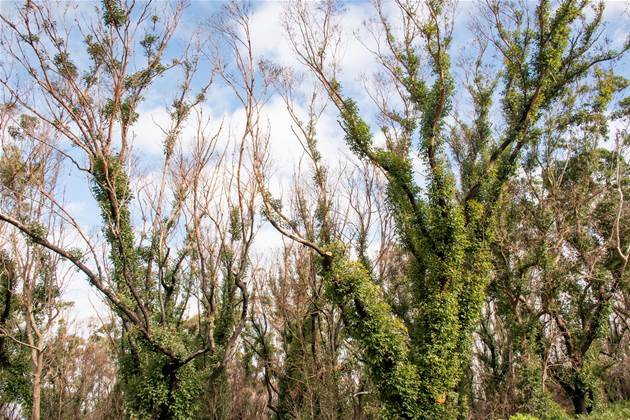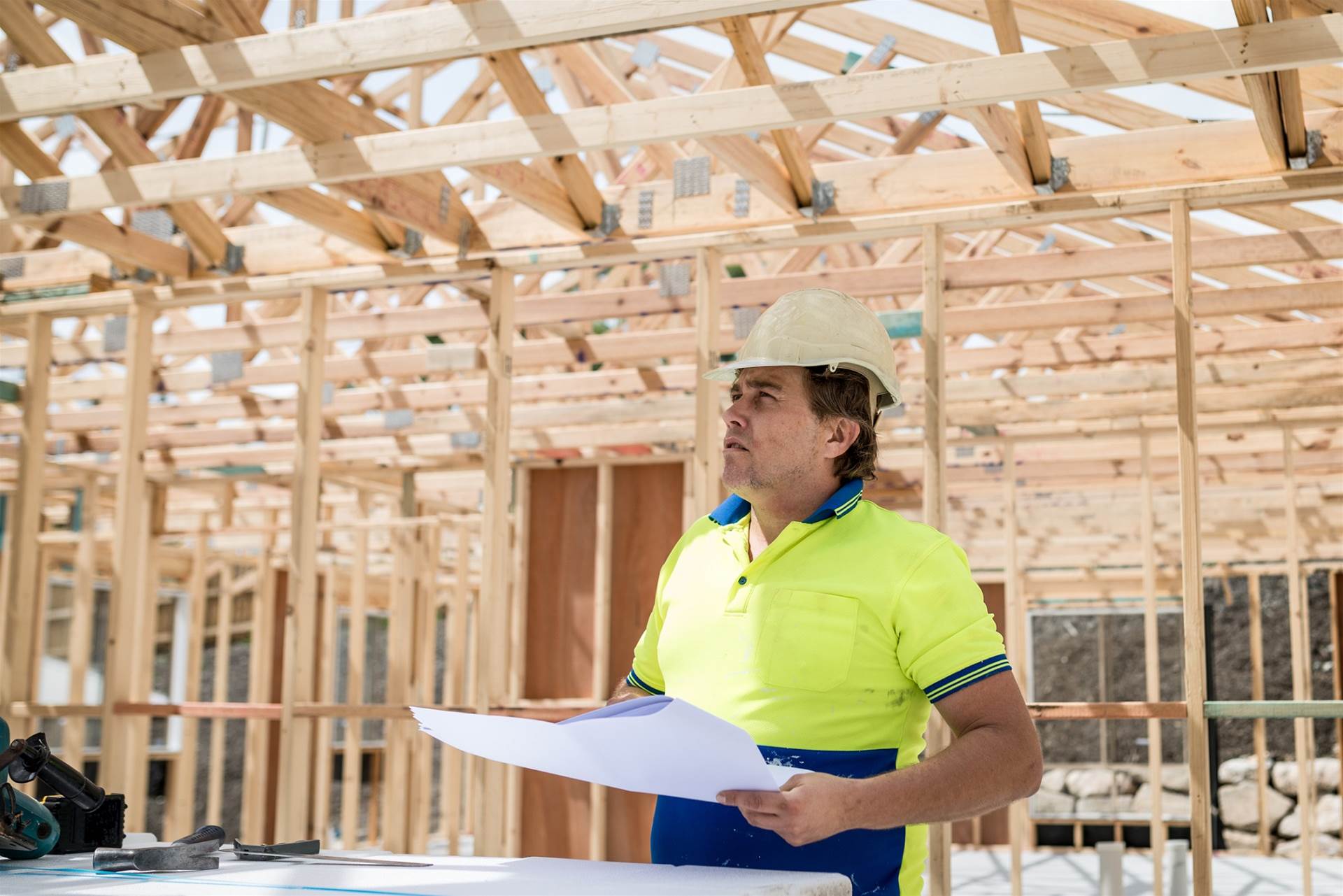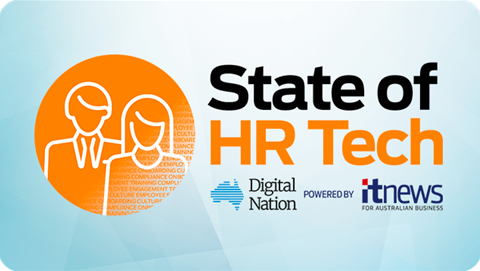In the summer of 2019-20, Australia was impacted by a series of devastating bushfires that destroyed hundreds of homes and left a damage bill in the hundreds of millions of dollars.

In NSW, fires burnt through seven percent of the state. They immediately left state government agencies, insurers, utilities, charities and other organisations with an enormous task to capture the extent of the damage and loss, and to help those impacted rebuild their homes, lives and communities.
“Many of our regional towns were impacted quite heavily,” Service NSW customer insights manager Philip Bland says. “People lost homes and property; small businesses lost incomes, jobs and trade.”
“And one of the requests from our state government was, could Service NSW help be the front door for those people to start their recovery journeys?”
The result was the Front Door to Recovery program, and through that the Bushfire Customer Care Service, which is helping NSW residents with everything from clean-up to securing financial assistance.
Service NSW teams stood up the capability extremely quickly. “From an announcement to getting content to the public was less than 24 hours,” Bland says. “We have some incredible teams”.
The agency was also able to reuse experience management (XM) software made by SAP’s Qualtrics that it had successfully deployed elsewhere to reduce red tape for new small businesses starting in the state.
Experience management is the process of monitoring every interaction people experience with a company in order to spot opportunities for improvement, according to Qualtrics.
“[We were] able to pivot XM into the Bushfire Customer Care program, which is an incredible outcome for the government,” Bland says.
Service NSW wanted to provide residents impacted by the fires with the resources they would need to rebuild. To do that, it needed to understand what they needed.
“The power of understanding the data of those customers and the stories they told was critical to make sure that we matched them with the right initiatives, we got the right communication out, and we could communicate to senior leaders across government the needs of that community,” Bland says.
To get that data, Bland says the agency surveyed its frontline staff in call centres, mobile service centres, pop-up sites and recovery centres.
“Due to the nature of the bushfire program we were running and the significant anxiety, trauma, and loss that people had suffered, we pulled back on the ability to measure the customer directly,” Bland says.
“What we really focused on was our frontline staff hearing the customer stories, and telling us where the gaps were in the services that were already available at that time.
“We can see where the ‘voice of customer’ is coming from straight away. We can get a breakdown of where customers are attending, whether it's our contact centers, email, talking to our staff from mobile service centres, or it's even in pop-up locations where we have a stand set up. We also have our support office who might be receiving correspondence from local Members of Parliament.”
Data captured included the type of property of business that a person had, the nature of damage and their insurance status - that is, whether they were insured or not.
“This is really, really powerful when we're talking about decision-making for legislation initiatives to be signed off, and for Treasury allocations,” Bland says. “The power of this data is really incredible.”
Reports generated by the Qualtrics XM platform helped senior leaders drill down into the data and understand differences in needs across the different fire affected areas of the state.
It also helped the NSW Government coordinate response efforts with local non-government organisations (NGOs) on the ground, such as the Australian Red Cross.
“A great example of how this tool was used quite quickly is, once we deployed the tool, we were actually [giving] the data from these ... feedback reports to our senior leaders and executives who were then meeting with agencies such as the Red Cross, disaster welfare assistance and emergency management, so we could really articulate that ‘voice of customer’,” Bland explains.
Building upon small business success

Service NSW’ first encounter with XM - and the Qualtrics platform - was to simplify the process for certain types of small businesses that were starting up in the state.
“Small business makes up over 90 percent of the NSW economy,” Bland says.
“But Service NSW recognised that the barriers to small business owners were many, multilayered across different layers of government, and complex.”
Out of that realisation, the Service NSW for Business program was born.
“Its goal was to make it easier to start a business,” Bland says.
“Ther program focused on cafes, restaurants and small bars, and housing construction. Traditionally that journey before our program took 12 to 16 months. You had over 48 different forms, 13 agencies, 30-plus phone numbers, over 75 regulations, and that's if you were doing something simple.
“Think about the effort and time that a business owner has to put into engaging governments across all layers. That's before thinking about your business plan, your profit models, your employment models. There's just so much overwhelming effort to undertake.”
To make that experience better, Service NSW created 'how to' guides, tailored to different industries, “that would help somebody navigate through the approvals, licenses and regulations for the business they want to start.”
It stood up a digital platform to provide an “intuitive and personalised experience where cafe owners and housing construction workers could register their small business into our platform, and then start to manage a checklist of the tasks and activities that they need to do.”
In addition, the agency created a free, phone-based business concierge service.
“Customers register for a callback, and they're met by a business concierge who will stay with them on that journey … to help them navigate government [rules and regulations],” Bland says.
Through those three initiatives, Service NSW was able to cut the time needed to navigate the rules and regulations down from an average 16 months to three months.
“That means more money going into the economy, more people getting employed, and I can see that this will be a really key service at Service NSW as we come to the backend of the COVID-19 situation,” Bland says.
The agency used Qualtrics XM platform to quantify the success of the scheme.
“We worked on a pilot with Qualtrics to come up with a really core framework that not only could help us deeply understand the benefits of their program, but also articulate those benefits across multiple layers of government, including both state and federal reporting, and [provide] benefits realisation to both of those levels of government,” Bland says.
“We started to measure things through XM such as, 'Are you confident that the information you're getting from our program is one source of truth?' 'Do you feel you can just come to us and be confident that you can go and undertake action?' 'Do you have a better understanding of the rules and regulations you need to comply with because of your interaction with Service NSW?' and, ‘Are you now [more] easily able to navigate governments?'
“They were the key questions we wanted to answer. These are the key things that deliver businesses to communities faster, employ people faster, and contribute to our state economy more quickly.”
Service NSW used the platform to capture “customer verbatims” as well as areas where small businesses thought the program could be improved.
It also used XM to capture information about the small businesses that went through the program after they had been operating for a period of time.
“One of the conversations we had [internally] is that we really wanted to understand those businesses that opened: could we go back and ask them how they were going, and could we measure that?” Bland says.
“We were a little bit on the borderline of optimistic, but … we asked them some really key questions like, ‘Are you still operating? How many staff have you hired? What's your turnover looking like? What's your profit margin looking like?’
“To our surprise, those businesses were willing to share that information with us, and the power of that information is incredible.
“What that allowed us to do was … to start understanding the impact that our program had.”
Of the small businesses that went through the program, over 90 percent are still operating, “exceeding [the usual] 78 percent survival rate for [small businesses in] NSW,” says Bland.
Eight percent of the businesses had employed over 10 people since opening, and millions of dollars in productivity was created.
“It's truly incredible and it makes me really proud to work for Service NSW, knowing that the teams around me are contributing to such great outcomes for our state,” Bland says.
Service NSW plans to extend the scheme to other business types in the state over the next five years.
Data and connectivity drive COVID-19 recovery

In much the same way as Australian councils are using real-time data to understand the impacts of COVID-19 on local areas, state governments are undertaking similar efforts.
A spatial digital twin used in NSW to model scenarios for the future urban growth scenarios is being used to inform post-COVID policy development, according to CSIRO’s Data61.
“As some of us return to office spaces, social distancing on crowded public transport is another challenge we must navigate,” Data61 says in a social post.
“The NSW Spatial Digital Twin can provide valuable insights to planners, infrastructure owners, developers, and policymakers, but in this case can also supply crucial information such as congested bus routes and live transport data that commuters in a post-COVID-19 world could find essential.”
Redefining what world-class digital looks like
Creating a “world class public service” is one of the NSW state premier’s key priorities. This will involve the implementation of “best-practice productivity and digital capability in the NSW public sector” through 2025.
The until-recently Acting Commissioner of the NSW Public Service Commission Scott Johnston told a NSW Government forum that the COVID-19 crisis is already putting that priority - and the mark of success - to the test.
“I've had a number of discussions about what this means in a time where we're buckling down and dealing with some of the hardest issues we've ever dealt with,” Johnston says.
“To me it's more relevant than ever. This is where our excellence, our credibility and our performance will be most judged.
“We're seeing in the last few weeks things that would have taken six months have been done in two days or three days. We’re still trying to keep the citizen or the customer at the centre of our thinking but how innovatively can we think about barriers that we just accepted in the past being removed so that we could do things better?
“It's a truly remarkable time and I genuinely think it'll change everything for us forever. This will start framing what is actually excellence and world class that's relevant for NSW, because we're caring more and more about all the decisions we're making and the impact on our people.
Between the 2019-20 bushfire crisis and COVID-19, the role of data and insight in problem-solving and “making a real difference” has never been greater.
“In the current times of the coronavirus, technology and digital ways of working have enabled us to continue to work from remote locations, and continue to serve our customers and our community in a safe and transparent way,” Johnston says.
Over the past year, the Commission has been working on designing and implementing a NSW Government-wide digital capability framework, aimed at uplifting the digital skills of all staff.
“Our profound challenge is about trying to get scale: how do we get everyone thinking differently?” says Johnston.
“Rather than just talking about digital accelerators of excellence in some parts [of Government], how can we get to a tipping point where we're all thinking and acting in a different way, where we all become learners and then we become teachers and [eventually] masters of the craft?
“I can feel a sense that it's changing, but there's 408,000 people in the NSW Government so it's hard, and it'll take time.”
Johnston said that COVID-19 underlined the business case for change. He noted the crisis could create social disconnection, counteracting state-based inclusion efforts; and lead to policy development on-the-fly, increasing the risk of missteps.
The state would need strong leadership into the future, improved resiliency, and broad adoption of an innovation mindset.
“The ambiguity of what tomorrow brings, and [the extent of] current problems have never been greater,” he says.
“The courage and persistence to just ride with it, work through it and use the support mechanisms and networks that we have to do that is, I think, a profound opportunity, but also a must.”



_(20).jpg&h=140&w=231&c=1&s=0)

.png&h=140&w=231&c=1&s=0)





 iTnews Executive Retreat - Security Leaders Edition
iTnews Executive Retreat - Security Leaders Edition












_(1).jpg&h=140&w=231&c=1&s=0)



